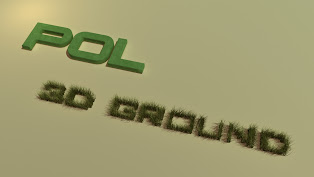This short tutorial on how to use VRay's Global Illumination feature will show you one method for creating realistic looking lighting for a scene. VRay is a very powerful external render engine for Max made by Chaos Group. VRay has many features including the ability to to physically accurate full global illumination, advanced material shaders and enhancements for speeding up rendering time. You can check the Chaos Group website to learn more about the various VRay features.
This is an intermediate level tutorial and it will not explore any modelling techniques, you will have to create a simple scene with a few objects laying around to follow this tutorial.

Assigning V-Ray As The Max renderer Engine
Start 3DS Max and assign V-Ray as the renderer engine. To do this access the window by hitting , scroll down to the rollout and expand it by clicking once on it, then click on the button next to the field and select from the list.


Creating and Setting Up the Lights
Access the tab and go through to start creating VRay lights. The number of VRay lights that you will need for a scene will depend on how big it is, for our project here I am going to use I placed them on the inner upper part of the box, in other words, on the ceiling, the light always go there, right?




Access the rollout to change the default settings of all the VRay light you added to the scene, I applied the changes illustrated in the image below.


Setting up the Render Configuration
Once all the lights are fixed in the scene, open the the window by hitting . Access the tab to turn the - this lets us deal with VRay Light for light calculations in render time only.

Scroll down to the rollout, activate the GI feature by checking the button, and then change the value of the to and set the to as illustrated in the image below.

Scroll down and look for the rollout and apply the settings illustrated below.

Irradiance is a function defined for any point in the 3D space and it represents the light arriving at this point from all possible directions. In general, irradiance is different for every point and in every direction. You can learn more about Irradiance map from the Irradiance map - online Chaos Group help file.
Look for the rollout, and check option as illustrated in the image below.

Light Cache: is a technique used for approximating the global illumination in a scene in order to create a clean soft shadow. For more info please check Light cache - online Chaos Group help file.
Move on to the rollout and increase the value for the to . Then go down to the rollout and apply the changes illustrated in the image below.

Conclusion
Here is my end result which for the demand of my client has low intensity of lighting without texture.

I hope that this tutorial will help you to start using the VRay render engine, make sure that you experiment with the different settings to discover new possibilities. Please feel free to email me at sunrise300@gmail.com for any suggestions or questions, you can also alternatively post at the Oman3D Forum.









0 comments:
Posting Komentar